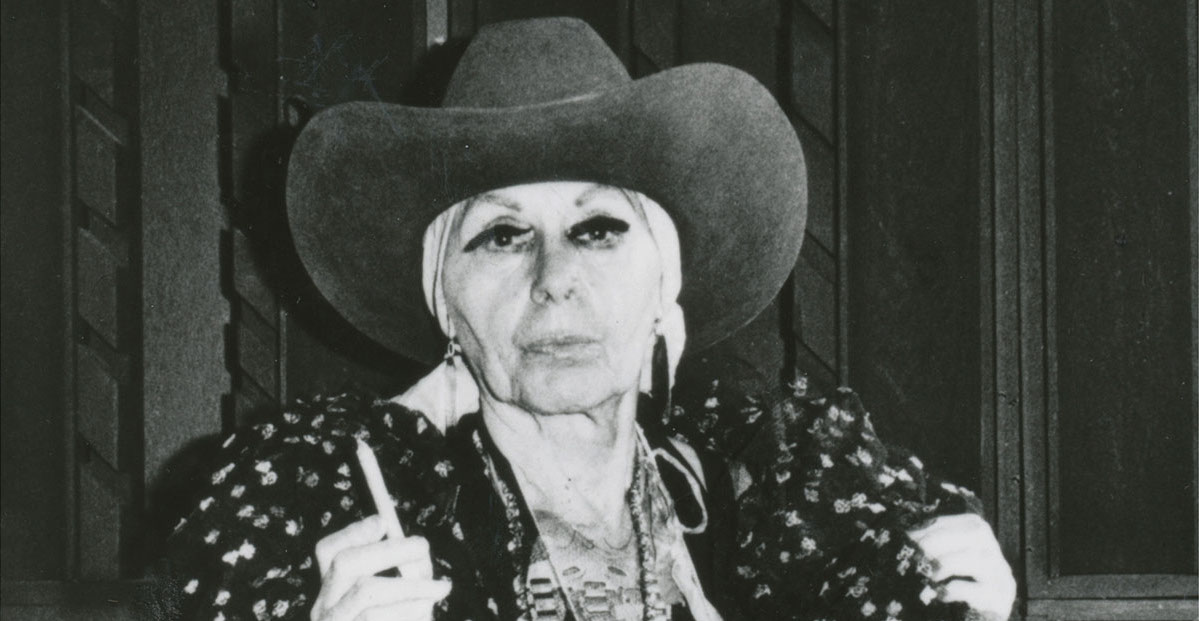Louise Nevelson was one of the relatively few female artists to make a major stir in the furiously competitive environment of the New York art world. Even so, it took her much longer to get there than was the case for male artists of the same generation. Born in 1899, she was not really a fully established star until around 1958. In 1959 she was included in Sixteen Americans, a turning point show at the Museum of Modern Art, side by side with Robert Rauschenberg and Jasper Johns. In 1962 her work was shown at the Venice Biennale.
All of this is fully chronicled in Laurie Wilson’s excellent new biography, Louise Nevelson: Art is Life. The review copy I was provided with has, however, one peculiarity. It is a so-called ‘uncorrected proof’, and it contains no illustrations, just grey blanks where they ought to appear. As I made my way through the text I began to notice how little I missed them. Which seemed a tad bizarre, given that this was the life story of a supposedly major artist.
If one turns to the Internet for help, once does indeed find quite a good selection of typical works from various dates in the artist’s career. Plus, of course, the usual warning that “some results may have been removed under data protection law in Europe.”
What is striking, however, is the very large number of images, not of the art, but of the artist herself, dragged up in extravagant costumes, often wearing some kind of headscarf. In the scarf portraits, where Nevelson is clearly in her late, ‘fame years’, it’s a little like being confronted with the image of an indubitably male impersonator doing his best to channel Mother Theresa.
This led me, cater-corner, to mediate on the kind of success that Nevelson undoubtedly had during the latter part of her career. I may have momentarily brushed against this myself. Sometime in the late 1960s I found myself at a Guggenheim Museum opening, standing on that accursed spiral ramp that silently admonishes the visitor not to waste time looking at the art – just for God’s sake get on with it, keep on moving downward so that the visitors snapping at your heels can also take a look.
In this case the couple willing me to move were a giggling Louise (as I only afterwards realized), and a younger male companion. Something about my appearance had set her sniggering, though it terms of looking weird it was probably no contest.
Reading the chronicle of Nevelson’s life, as it is fully and admirably recounted here, what struck me was the way in which she eventually came to terms with high-rolling American corporate culture. Her best and most characteristic works are her walls of wooden boxes, piled high, filled with small wooden fragments of different shapes and sizes. Usually, the whole intricate structure is painted matt black, but sometimes it can be all white, or all gold. There were some typical examples in a recent Nevelson show at the branch of the Pace Gallery here in London. Pace were also Nevelson’s final-phase dealers in New York.
Looking closer at works of this kind, you realize that many of the layered fragments from which they are composed must have led previous lives. There are bits of discarded furniture, small architectural fragments. You can see sculptures of this kind as being readings of the way that a big city like New York constantly rises and falls. They show how one generation, confident about its own way of living, replaces another, which had different ideas and different needs. I’ve always seen these wooden works as poetic and melancholy, full of an aura from the past.
Not so the big outdoor sculptures, crafted from metal, that Nevelson made in her last phase. They are what some people unkindly call ‘plop sculpture’, intricate maybe, but safely unspecific. They’re not going to get corporate money into trouble. They gave the sculptor the fame and major financial success she’d always longed for, had always (one might say) dressed up to be ready for. Today there’s even a Louise Nevelson Plaza in New York. The sculptures there were commissioned by the Chase Manhattan Bank. But this too has been subject to drastic change. As a recent (2015) web posting from the Lower Manhattan Cultural Council notes:
“Nevelson initially designed the entire plaza, including the plantings and benches, in addition to the seven sculptures. However, over time the plaza fell into disrepair, including an instance when a truck hit one of the sculptures. A 2010 redesign by Lower Manhattan Development Corporation restructured the site; the six smaller sculptures were redistributed and new benches and greenery were placed. As a result, only the 70-foot sculpture remains in the original location keeping with Nevelson’s initial conception.”
Poor Louise – you can’t win them all.
Laurie Wilson, Louise Nevelson: Art is Life – Thames & Hudson £24.95
Words: Dryden Mackenzie © Artlyst 2016
Photo Courtesy Thames & Hudson

